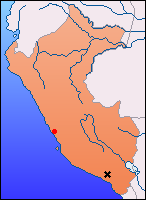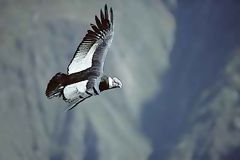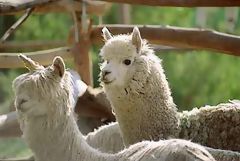 |
Related pages: |
 It's
the new "must" of the Arequipa
region. The canyon stretches for a hundred of kilometers. Peruvians pretend
it is deeper than the one in Colorado and give the number of 3.000 m.
Of course, to get there, they calculate the height of the summit of the higher
mountain in front (which really ends at 3.000 m), even though the other side
of the canyon is no as high.
It's
the new "must" of the Arequipa
region. The canyon stretches for a hundred of kilometers. Peruvians pretend
it is deeper than the one in Colorado and give the number of 3.000 m.
Of course, to get there, they calculate the height of the summit of the higher
mountain in front (which really ends at 3.000 m), even though the other side
of the canyon is no as high.
 On the other hand, the Colca canyon has its own personality, a very
different approach and change of scene. What fascinates specially, and what
makes of it a unique place, are the thousands of hectares of terraces (andenes)
designed in harmony and sculpted in the mountain, in the most wild and steep
places. Amazing to find you in front of human works so gigantic, work of the
Indians Culluhuas, a civilization older of 1.000 years, even older than
the Incas!
On the other hand, the Colca canyon has its own personality, a very
different approach and change of scene. What fascinates specially, and what
makes of it a unique place, are the thousands of hectares of terraces (andenes)
designed in harmony and sculpted in the mountain, in the most wild and steep
places. Amazing to find you in front of human works so gigantic, work of the
Indians Culluhuas, a civilization older of 1.000 years, even older than
the Incas!
The three most important moments of the trip are essentially the trip itself over a hundred kilometers of desert pampas where we find lamas and alpacas in landscapes so harsh that they become beautiful. With a little luck, you could maybe see some vicuñas too. The crossing of the hill Patapampa at 4.800 m of altitude (the Mont Blanc without effort, in some way!). Then the deep and wild valley at the beginning of the canyon, covered by great terraces (probably the most important of Peru), before getting to the impressive canyon itself (1.200 m of depth at this place), at the watch point the Condor Cross (at 197 km from Arequipa); called like this because it is often visited by this imposing birds of the Andes that are the condors, which very often come by dozens.